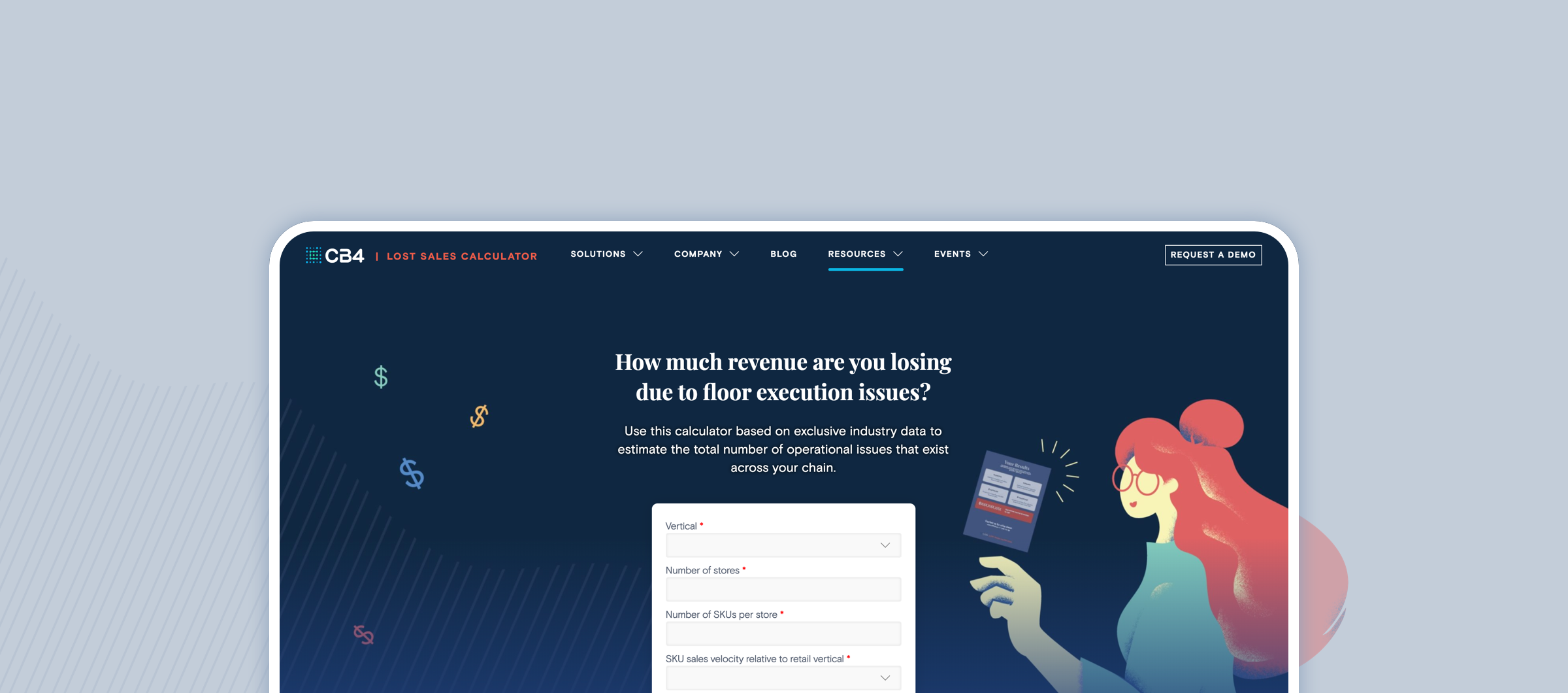At CB4, we live and breathe retail. That means connecting with our customers and other retailers whenever we can to learn about their successes, the challenges their stores face, and how they’re adapting to the demands of 21st century brick-and-mortar.
One question we love to ask retail leaders is: “How much revenue does your chain lose due to in-store operational issues and execution problems?”
We recently posed this question in our 2019 C-Store Operations Survey, in which we asked operations executives within the convenience vertical about their 2019 priorities.
Their answer? Crickets.
No one measures the cost of sales lost due to in-store operational problems not because it’s insignificant, but because they don’t know how to calculate it.
Nonetheless, one thing is clear—everyone agrees that costly in-store operational issues exist. Some of the most prevalent issues include:
- Items sell and then never get replenished from back stock.
- Inventory discrepancies and vendor errors cause out-of-stocks.
- Products are placed on the floor, but are obscured by other items or are out of shoppers’ line of vision.
- Promotions are incorrectly applied (for example sales signs don’t go up, or items have conflicting price stickers).
These sales obstacles occur every day in each store across your chain, and it’s hard to know how quickly they’re resolved or how much they hurt your bottom line.
Given our expertise in predictive analytics, we just had to connect the dots. Establishing the aggregated financial cost of losses that occur in each store in your chain is the first step. That’s why we created our Lost Sales Calculator to do just that (in under three minutes):
How We Built It
To start building the Lost Sales Calculator, CB4’s Head of Solution, Ben Nichols, poured over all of the PoCs we’ve created over the past 2-3 years and categorized them by retail vertical, sales velocity and SKU assortment. With the newly aggregated data, he created a benchmark of expected “Issues Found” and “Sales Dollars Recovered” under different criteria.
According to Ben, the magic of the calculator boiled down to algebra: What is the coefficient (or ratio) of SKU assortment to issues found by vertical and sales philosophy? Those are the inputs he started with. Beyond that? Ben says he’d prefer to “leave a little mystery around the rest of the formulation.”
How Accurate Is It?
The Lost Sales Calculator is surprisingly accurate. Ben describes conducting a sensitivity analysis that tested how small fluctuations in the input parameters influenced the output of the calculator. Of course, every user will have expectations given the way they run their business. For example, factors in retail settings that could influence the calculator’s findings are:
- Inventory replenishment models
- Interplay between merchandising and operations
- Store manager influence over product assortment
- And more.
Nonetheless, the tool is a demonstration of how in-store execution problems tend to play out, and the losses associated, in a range of real-world retail settings. In the end, Ben tested the calculator against some PoCs that he didn’t originally include as inputs to the model, and was pleased to find that the calculator performed within ±30% of the true PoC estimates.
How to Use It
The Lost Sales Calculator is not directional, and retailers shouldn’t live and die by its estimations. The calculator relies on a few simple inputs. Without having your actual data, the calculator provides a range of improvement that’s possible using CB4.
Nonetheless, the calculations are based on proprietary data and are demonstrably similar to what we’ve done for our clients. In fact, if you put your information in and find something that’s useful to you and your team, take the next step and reach out to us for a demo. With your basic POS data on hand, we can run a quick PoC so that you can see how the data looks for your chain and whether we should continue the conversation.
We debuted the calculator at the 2019 NRF Big Show. It was the perfect opportunity to create a splash and see firsthand how our customers and prospects liked the tool. The biggest shock came from retailers with fewer than 150 stores and from retailers within specific verticals. Matthew McAlister, CB4’s Director of Marketing, describes: “I don’t think they believed that it would work for them, since some of our biggest banners are our enterprise clients. When we’re directly saying we can provide a lift in sales of 0.5-2%, that’s pretty shocking, especially to someone operating in a low-margin space like grocery.”
The Takeaways
It’s easier to combat problems that you can understand. You can quickly see when suppliers aren’t delivering, or when theft leads to shrinkage across your chain. Likewise, it’s nearly impossible to correct the issues you can’t see. And in-store operational problems such as misplaced merchandise and incorrect labels are easily overlooked, even by store managers.
But that doesn’t mean these problems aren’t hurting you. Consider that the calculator only tells you one side of the story—the dollars you’re leaving on the table when you let these issues persist. It falls short of telling you the rest of the story—the one in which customers leave your store disappointed when their needs aren’t met. What’s the cost of the damage to your brand? Or the revenue your competitor gains when your disappointed customer heads to them instead?
Ready to gain insight into how much in-store operations issues cost you? It takes fewer than three minutes to input your chain’s data.
If you’ve given it a whirl and find the results surprising, get in touch to further refine the results for your retail chain. And we’ll show you how we can easily correct the problem.




